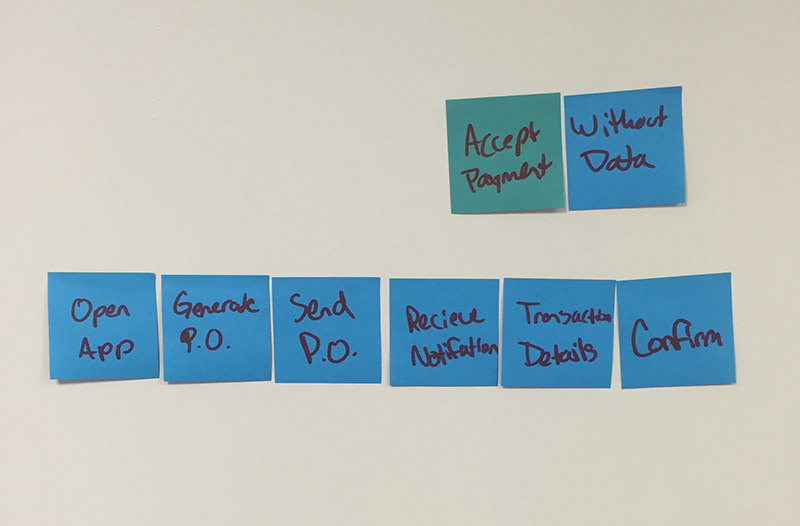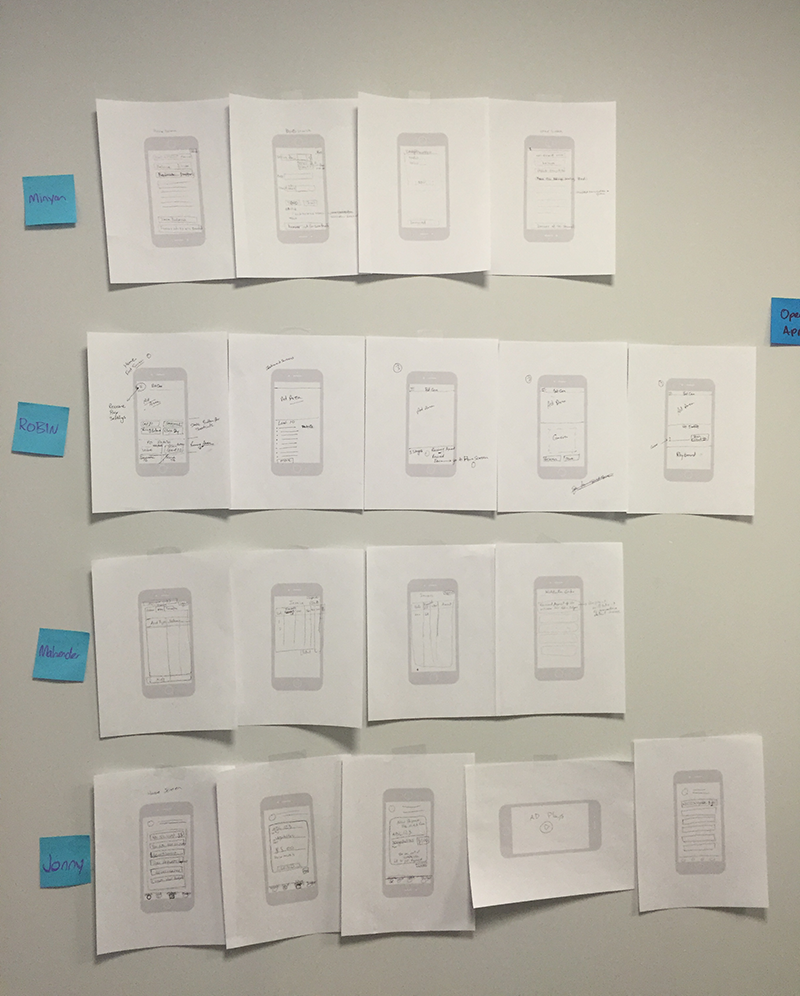DEVELOP
The chosen area of pursuit was Sponsored Banking. Given practical constraints such as time, resources, and distance from my user population, I adopted a lean strategy to approaching this area. This meant that I had to build first and ask questions later rather than conducting user research upfront (Gothelf, 2013). This, in my opinion, is not ideal but yet still adequate given the circumstances. However, I was able to utilize some personal resources that I had around me in the form of 3 lead developers at Datami who are either from, or have spent substantial time in the Asia-Pacific and India and who also contemplate the issues of mobile data access and sponsorship everyday while they work on Datami’s core products. Additionally, the target user that was identified for this sponsored banking solution is the same as the target for the Datami Discovery app which I was currently working on. This allowed me to leverage the persona and user research that had been conducted for that project, on this one.
Lo-Fi Prototyping Workshop
To begin this section I would like to note that I had previously reached out to IDEO Futures via Twitter to ask if they had any advice for me about running a workshop with my company to explore the potential of blockchain tech. While their response did not come soon enough for my initial workshop, it did help guide my approach to a different one. IDEO Futures responded to my question in their podcast and made the point that a “a workshop should be a workshop” meaning that the participants should aim to make something whether that be with pencil and paper, with code, or somewhere in-between. I took that to heart and knowing that prototyping something out of code would be stretch for a number of reasons (supported my experience at the MIT Prototype Jam), I decided that a viable and valuable prototyping session could be done without it. I simply thought of how I, as a designer without coding experience, would prototype this idea. I decided to run a workshop with 3 of the lead developers at Datami who I worked alongside in the Boston office.
The workshop was divided into 3 activities: a user-value proposition framework, a user-story map, and a low-fidelity prototyping session. To begin the session I led the participants through a fill-in the blank style user-value proposition framework that I had used in my time at Hyper Island. I find this framework to be particularly useful due to its conversational and narrative structure. Following this we decided we wanted to explore an app that solved our identified user needs. We then zeroed in on a single function of the app that we wanted to prototype, but before we began to prototype we mapped out a user-story for the action.


This user-story allowed us to think through, on a very granular level, all of the things that the app would need to do to allow our user to accomplish their goal. This proved to be useful as we made a number of changes to the structure of the user-story which made it clear that participants had different understandings of how the app needed to function. Once we reached agreement on the user-story it was time to prototype. I chose to lead the group in a low-fidelity, pen and paper prototyping session.


I had prepared a stack of prototyping worksheets that featured a very large outline of an iPhone and distributed these sheets to the participants. We then went through a process of 3-min rounds of rough user interface design with the goal of each round to prototype a screen for each step in our user story. At the end of this process each participant walked the others through the flow of their app. This concluded the workshop as we ran out of time, however, there was an additional step that I carried out on my own that I had planned to include in the workshop. This was the step of uploading each participants app to the digital prototyping tool PopApp.
Feedback
The workshop was successful in providing the group with a number of different user experiences for our intended prototype. It was also useful on a deeper level of identifying increasingly specific needs about the users in question. This may be attributed to the use of the persona and the user story at the beginning of the process. By using a number of design thinking tools, especially tools that don't feel explicitly like "design" activities, the workshop enjoyed a gradual build in participation. Participants of the workshop, being developers, brought an interesting and useful dimension to the protoyping as they designed with practicality in mind.
When interviewing the participants after the workshop to receive feedback Minyan told me that she was skeptical about the usefulness of a low-fidelity prototyping session. By the end she told me that she thinks Datami should be running more workshops of this sort and using them to explore the other blockchain use cases that emerged out of the Fears and Opportunities workshop. Minyan also believed that beginning with a user-story helped the group to stay focused on a small number of tasks and features. Mahender also believes that the workshop was a good model for vetting use cases quickly. When I spoke to Robin about the workshop and how he felt it went he said,
"That was awesome! I loved it!... The idea and the motive behind it was really cool. It is not too far away that you will have all these things in the market (Balyan, 2016)."


Reflection
Having developers as participants made for very productive discussions around the actual workings of the app. I have been told that the danger of working with very technically skilled people is a risk of losing sight of the human center of the process. However, by starting with a persona and story about the user that the participants created, the workshop was able to stay on track. This further supports the hypotheses that the tools experience designers use are effective in the exploration of emerging technologies. I believe this to be because they are effective at getting underneath the veneer and the hype that often accompanies these new concepts. Though the technical landscape that surrounds is always changing, the human needs that these technologies aim to serve stay rather constant. Additionally, the expertise that the developers brought to the table also allowed us to make much more functional progress in the prototyping than one might normally experience. We were able to uncover insights and solutions related to the “know-your-customer” problem that is prevalent in the crypto-payments space. The prototype was also helpful in exploring the right amount and the right way to include advertising and brand messaging in the app as a means to sponsor the apps data consumption.
In terms of room for improvement, I think the biggest shortfall of the prototype was not completing the final step of moving the UI sketches to PopApp. In the future, I would like to be able to get participants to spend 5 minutes uploading their app and then be able to walk another participant through the screens. I think the workshop could go as far as having all the participants deliver and walk through the prototype of another participant’s app.











